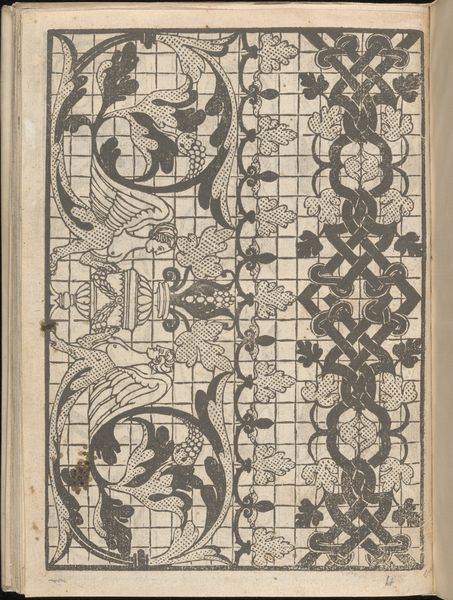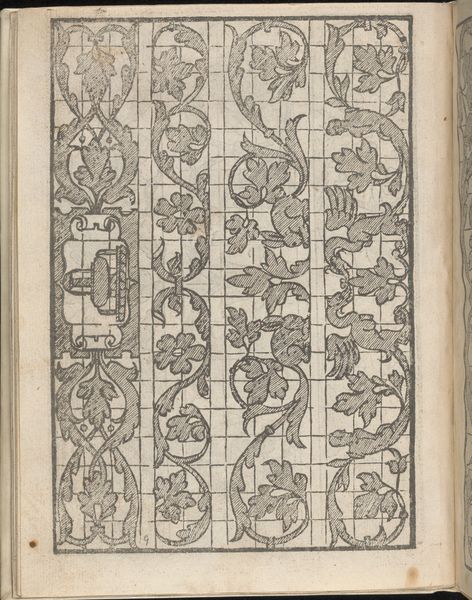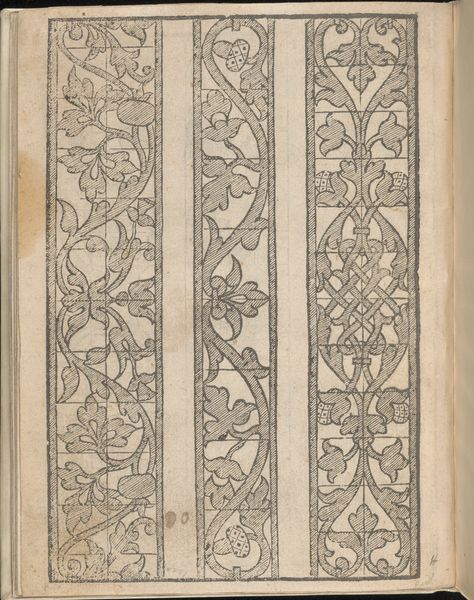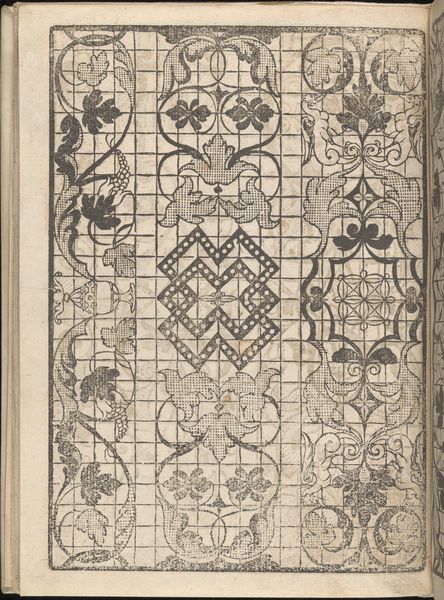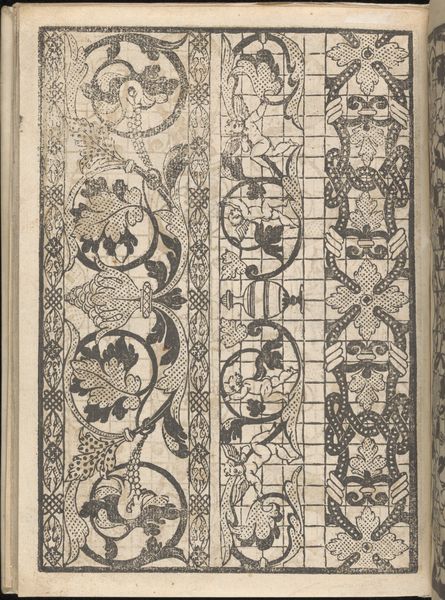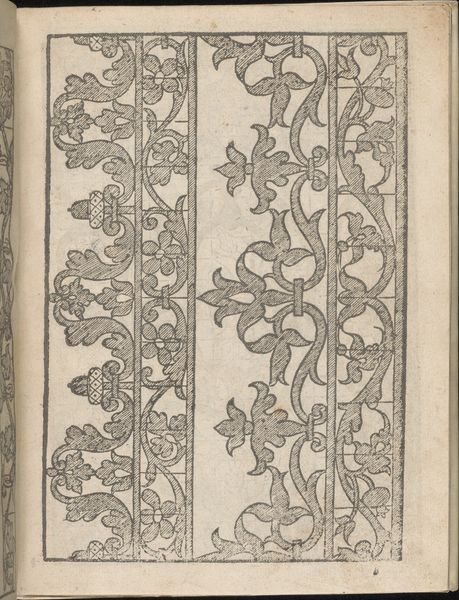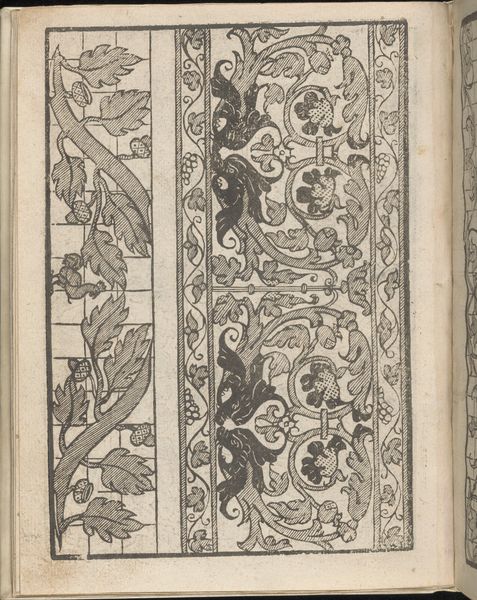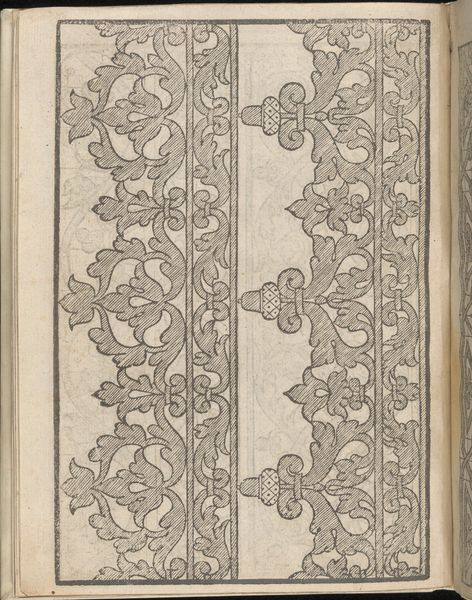
drawing, print, pen, engraving
#
drawing
#
medieval
#
pen drawing
# print
#
geometric
#
line
#
pen
#
engraving
Dimensions: Overall: 7 7/8 x 5 7/8 in. (20 x 15 cm)
Copyright: Public Domain
Editor: This is page 10 from "Lucidario di Recami," created in 1564 by Iseppo Foresto. It's a pen and engraving print, full of geometric and floral patterns. It feels very structured and deliberate. What catches your eye? Curator: The grid underlying the decorative elements is particularly fascinating. It immediately speaks to the process of production, the labor involved in creating these repeatable patterns. This wasn't just freehand drawing; it was carefully constructed and intended for reproduction. How do the materials themselves influence your understanding? Editor: I hadn’t thought of the grid in terms of labor! I was just thinking it was decorative, or for symmetrical placement of the floral elements. Knowing it's for a print makes the repetitive nature feel more purposeful. What do you mean, "influence my understanding"? Curator: Well, consider the shift from unique artwork to reproducible design. The print medium itself democratizes art. These patterns could be disseminated widely, influencing craft and potentially blurring the lines between high art and everyday life. Was this access common for its time? Editor: I see what you mean. It would bring the ideas to a wider audience, for sure. How was something like this used at the time, and what was the context around Foresto's work? Curator: “Lucidario di Recami" was a book of embroidery patterns. Think of it as a manual for craftswomen, detailing popular trends and patterns for decorative household use, as well as clothing embellishments. Embroidery and needlework held significant social value in the 16th century. By emphasizing this, what happens to the traditional values assigned to art objects? Editor: So it elevates something practical – textiles, clothing – to the level of art, or at least brings artistic principles into those crafts. I see how the material processes challenge traditional boundaries of art. Curator: Exactly. By looking closely at the materials and techniques, we can move past simple aesthetic appreciation and understand how art functioned within a broader social and economic context. Thanks for sharing! Editor: And thank you. Looking at it as a blueprint rather than just a drawing really shifts my perspective.
Comments
No comments
Be the first to comment and join the conversation on the ultimate creative platform.
